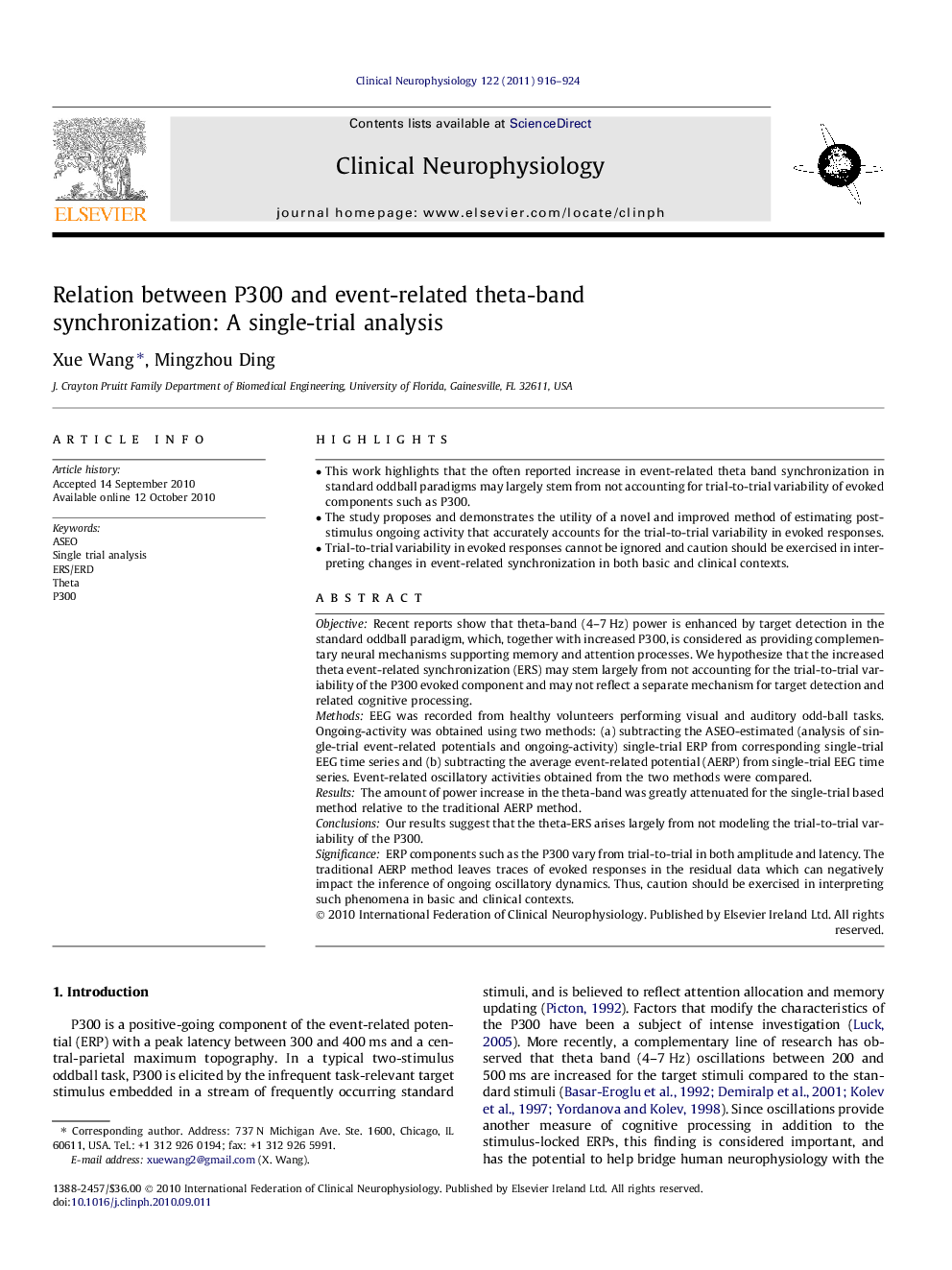| Article ID | Journal | Published Year | Pages | File Type |
|---|---|---|---|---|
| 3044469 | Clinical Neurophysiology | 2011 | 9 Pages |
ObjectiveRecent reports show that theta-band (4–7 Hz) power is enhanced by target detection in the standard oddball paradigm, which, together with increased P300, is considered as providing complementary neural mechanisms supporting memory and attention processes. We hypothesize that the increased theta event-related synchronization (ERS) may stem largely from not accounting for the trial-to-trial variability of the P300 evoked component and may not reflect a separate mechanism for target detection and related cognitive processing.MethodsEEG was recorded from healthy volunteers performing visual and auditory odd-ball tasks. Ongoing-activity was obtained using two methods: (a) subtracting the ASEO-estimated (analysis of single-trial event-related potentials and ongoing-activity) single-trial ERP from corresponding single-trial EEG time series and (b) subtracting the average event-related potential (AERP) from single-trial EEG time series. Event-related oscillatory activities obtained from the two methods were compared.ResultsThe amount of power increase in the theta-band was greatly attenuated for the single-trial based method relative to the traditional AERP method.ConclusionsOur results suggest that the theta-ERS arises largely from not modeling the trial-to-trial variability of the P300.SignificanceERP components such as the P300 vary from trial-to-trial in both amplitude and latency. The traditional AERP method leaves traces of evoked responses in the residual data which can negatively impact the inference of ongoing oscillatory dynamics. Thus, caution should be exercised in interpreting such phenomena in basic and clinical contexts.
► This work highlights that the often reported increase in event-related theta band synchronization in standard oddball paradigms may largely stem from not accounting for trial-to-trial variability of evoked components such as P300. ► The study proposes and demonstrates the utility of a novel and improved method of estimating post-stimulus ongoing activity that accurately accounts for the trial-to-trial variability in evoked responses. ► Trial-to-trial variability in evoked responses cannot be ignored and caution should be exercised in interpreting changes in event-related synchronization in both basic and clinical contexts.
